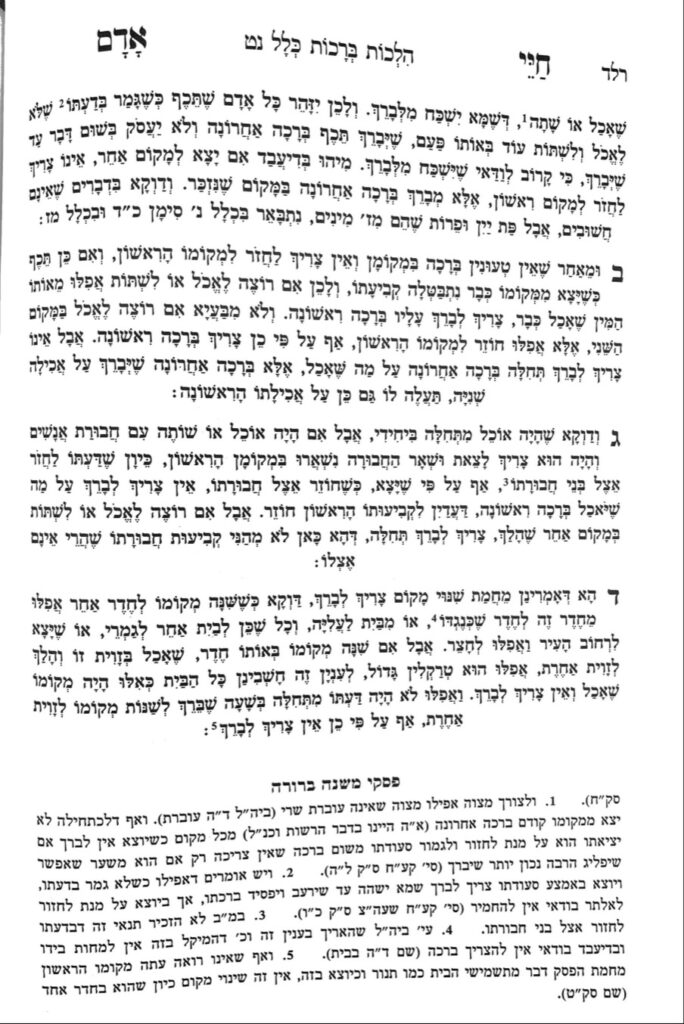We are beginning siman 5. The Chayei Adam introduces the element of daas, intent, to these halachos. If one has daas originally (when making the bracha rishona) that they would move to a different makom, they will not need to make a new bracha, because it is not considered a shinui makom if one had daas for that place.
However, this halacha is limited to moving m’cheder l’cheder, between rooms in the same building. It does allow one to move m’bayis l’bayis, between different houses, and may not even work from inside a house to a yard.
As we have learned (shiur 1139), in a situation in which one needs to make a new bracha rishona, they need to do so even if they return to their original place. On the other hand, in a scenario where one had daas to move, if one moves me’cheder le’cheder, they do not need to make a new bracha rishona, even if they do not return to the original room to continue their meal. Also, as we have learned (shiur 1141) moving around within the same room–even if the room is very large–is considered the same makom, even if one did not intend to move from their seat originally.
All these halachos regard other food and drink. Bread and shivas haminim create a certain k’vius to them, and may be different. We will learn more about them in later simanim, be’ezras Hashem.
Regarding an apartment building, although all apartments may be within the same roof, each apartment is considered a different unit. Therefore, the assumption of most poskim is that different apartments are considered different houses, and one would require a new bracha rishona if they go from apartment to apartment. If there is an area which is used almost exclusively by one family (e.g., only one family lives on the top floor so the stairwell is used primarily by them), moving from the apartment to the stairwell would be considered moving me’cheder le’cheder, and one would not require a new bracha, if they had daas. Areas which are commonly used by others are a major machlokes poskim, and, due to the safeik, one would not make a new bracha.
Summary
- On a borei nefashos food, if one has daas, they can move between rooms in the same building without reciting a new bracha rishona, but cannot extend this daas to between houses. (Practically, we have learned [shiur 1141] that the stam daas includes such situations, so even without explicit daas one would not make a new bracha.)
- In an apartment building, an area used primarily by one family would be considered a room within their apartment and would not require a new bracha, if they had daas. An area used by many is a machlokes, and one would not make a new bracha our of safeik. But from one apartment to the next, one requires a new bracha even if they had daas.


